The criminal justice system in the United States has gone through several stages of development, which have led to the modern day system. Criminal justice systems today are made up of several cohorts, which include local police forces, investigative units, legal recourse and a system that is designed to punish and deter criminal activity. The tools used in the modern criminal justice system are vast, and investigators have several options available to track, investigate and prosecute criminals today.
Looking Away From the Past
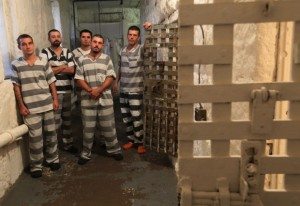
Present day techniques are much like a foreign country to the policies of the past. There is a profound sense of difference that is evident between modern day criminal justice systems and procedures, and those of the past. For this reason, it makes little sense to dwell on historical aspects, and instead learn about the modern day system and how it affects civil liberties and the lives of citizens living today. While an exploration of the past is interesting, and even necessary for the development of workable systems, there is often very little relevance to modern day tools, techniques and procedures.
Featured Schools
Defining the Criminal Justice System
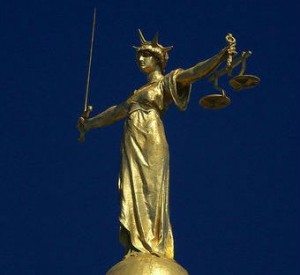
The criminal justice system involves several agencies and processed designed to control crime and impose penalties on people who violate laws. The system itself is not standardized throughout the United States; meaning, there are several different criminal justice systems that operate on a similar, but individual basis dependent on the area in charge of a jurisdiction. Each city, county, state, federal, tribal or military jurisdiction has slightly different rules, regulations and processes for controlling crime.
Components of the Criminal Justice System
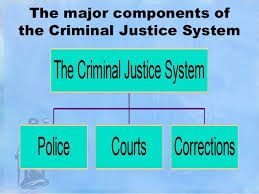
The criminal justice system in the United States consists of five main components — law enforcement, prosecution, defense, courts and corrections. Each component comes into play at a different stage of the process. Law enforcement officials work in the field to apprehend and bring criminals to justice, attorneys prosecute and defend criminals, courts hand down sentences, and correctional facilities are geared toward rehabilitating criminals and preparing them to be productive members of society.
- Law Enforcement
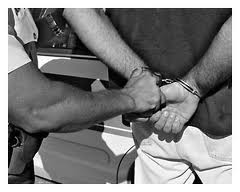 Law enforcement officials are a criminal’s usual first introduction to the criminal justice system. Police officers, detectives and other peace officers are charged with the responsibility of protecting the communities they serve and investigating crimes. Often, this leads to the apprehension of criminals. Peace officers gather and protect evidence that is used to convict or exonerate criminal suspects. Often, peace officers are required to provide testimony in court and conduct follow-up investigations in ongoing cases. Local law enforcement is responsible for knowing the ins and outs of a local community in order to better respond to threats.
Law enforcement officials are a criminal’s usual first introduction to the criminal justice system. Police officers, detectives and other peace officers are charged with the responsibility of protecting the communities they serve and investigating crimes. Often, this leads to the apprehension of criminals. Peace officers gather and protect evidence that is used to convict or exonerate criminal suspects. Often, peace officers are required to provide testimony in court and conduct follow-up investigations in ongoing cases. Local law enforcement is responsible for knowing the ins and outs of a local community in order to better respond to threats. - Prosecution
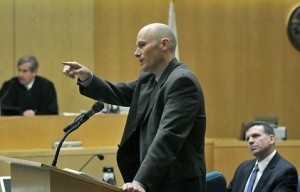 Prosecutors are charged with representing the state of federal government in civil and criminal cases. The prosecution collects, analyzes and presents evidence in court or in pretrial hearings in an attempt to protect victims. Prosecutors may be required to present evidence in court, and they primarily review evidence and cases to determine if a case should be brought to trial or result in a plea bargain. Most cases are resolved out of court since a court hearing is often expensive and generally the defense can get a better result by working directly with the prosecutor. A victim in a case can contact the local prosecutor’s office to determine who is assigned to a case related to the victim.
Prosecutors are charged with representing the state of federal government in civil and criminal cases. The prosecution collects, analyzes and presents evidence in court or in pretrial hearings in an attempt to protect victims. Prosecutors may be required to present evidence in court, and they primarily review evidence and cases to determine if a case should be brought to trial or result in a plea bargain. Most cases are resolved out of court since a court hearing is often expensive and generally the defense can get a better result by working directly with the prosecutor. A victim in a case can contact the local prosecutor’s office to determine who is assigned to a case related to the victim. - Defense
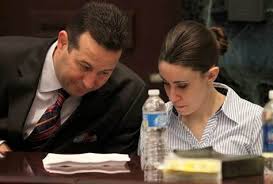 The defense works on behalf of the accused. Defense attorneys fulfill many of the same roles as the prosecution, but with the crucial distinction of proving the innocence of the defendant. In cases where a defendant can’t afford an attorney, the court appoints an attorney to represent them. Most defense attorneys assigned by the court have to take on several cases at a time, so the defendant does not receive the exclusive attention of the defense attorney. However, if a defendant has the means, they can hire their own defense attorney to help with their case.
The defense works on behalf of the accused. Defense attorneys fulfill many of the same roles as the prosecution, but with the crucial distinction of proving the innocence of the defendant. In cases where a defendant can’t afford an attorney, the court appoints an attorney to represent them. Most defense attorneys assigned by the court have to take on several cases at a time, so the defendant does not receive the exclusive attention of the defense attorney. However, if a defendant has the means, they can hire their own defense attorney to help with their case. - The Court System
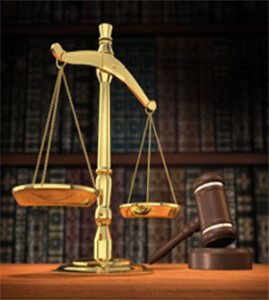 The court system in the United States is very complex. There are several courts at the state and federal level that each have their own specific processes and procedures. The two court system helps prevent gridlock and lets state courts deal with issues specific to their laws, while the federal courts deal with issues that extend into more than one state or deal with federal property.
The court system in the United States is very complex. There are several courts at the state and federal level that each have their own specific processes and procedures. The two court system helps prevent gridlock and lets state courts deal with issues specific to their laws, while the federal courts deal with issues that extend into more than one state or deal with federal property.
The entry level courts that most U.S. citizens will deal with at some point in their lives are the limited and general jurisdiction local courts within a state. Limited jurisdiction courts deal with civil cases, juvenile issues, some criminal cases and traffic violations. Most cases in the limited jurisdiction courts consist of an informal trial court between a defendant and the judge. General jurisdiction courts deal with lawsuits and serious crimes. The general jurisdiction courts include circuit courts, superior courts, district courts and courts of common pleas. Additionally, depending on the size of the state, some states have specific courts that deal with family, juvenile and small claims.
If a case goes sour in a lower court, it may be heard in the appellate courts. The appellate courts, also known as appeals courts, don’t try cases. Instead, they evaluate a case and determine if their is a basis for dismissal, award adjustments or uphold decisions made at the lower courts. Appeals courts don’t automatically review lower court decisions, and a lawyer typically must file an appeal to be considered for evaluation.
The final court at the state level is the supreme court. The supreme court generally offers the final verdict on serious cases, and is seen as a last resort. In extreme cases, a supreme court decision may be appealed at the federal level, but this is uncommon and very difficult to obtain.
The federal courts are divided into many districts and circuits. Every state has at least one federal court, but states with larger populations and size may have more than one federal court. Federal courts are often used to hear civil cases, and criminal cases are generally not decided at the federal level. Bankruptcy, federal claims, veteran appeals and tax issues often have their own federal courts. The top of the federal court system is the U.S. Supreme Court. This court deals with extreme cases and represent the final say on how law is to be interpreted within the country. Cases must work their way up to the U.S. Supreme Court, and most cases are only heard after several years worth of trials and lower court decisions.
Rules are set into place at each level in the court process. These rules are designed to protect defendants and victims. This provides the most likely chance for an individual to have their case heard, and to receive a fair and non-biased verdict on their case.
- Corrections
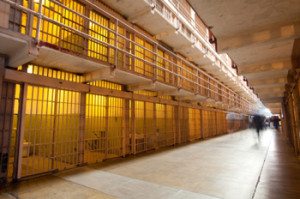 The corrections component of the criminal justice system concerns itself with supervising convicted criminals in jail, prison or while on probation. Corrections officers are charged with ensuring that facilities are safe, secure and follow state and federal regulations. Part of the goal of the correctional facility is to rehabilitate criminals and make them ready for re-entry into the world.
The corrections component of the criminal justice system concerns itself with supervising convicted criminals in jail, prison or while on probation. Corrections officers are charged with ensuring that facilities are safe, secure and follow state and federal regulations. Part of the goal of the correctional facility is to rehabilitate criminals and make them ready for re-entry into the world.
An Overview of the Process
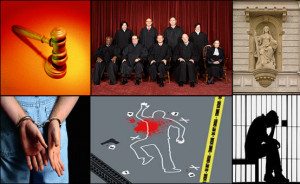
The criminal justice system starts with a report and ends post-trial events. The first stage of the process is where law enforcement officials respond to a crime and report information. This could be in the form of witness reports, victim reports or other parties that are privy to knowledge about the crime. Once a report is made, an investigation begins in an attempt to uncover any illegal activities and gather evidence. Contrary to most depictions of an investigation in television and movies, most criminal suspects have no idea they are the subject of an investigation. Once enough evidence is acquired to assure a conviction and arrest or citation is made.
After the initial entry into the criminal justice system occurs, the pretrial and prosecution takes affect. Charges are entered against the criminal. From there, a court appearance may occur. At the time of the first court appearance, a court assigns a bail or bond that the defendant must pay to get a release from jail. The bond is not a penalty, but a lump sum that must be paid to guarantee that the defendant won’t flee. It acts as security to guarantee that the defendant appears when a trial date is set. In some cases, there is no option for bail or bond. Next is a grand jury or preliminary hearing where the defendant presents their case to the court. The defendant is then brought before the judge for arraignment, in which the judge informs them of their rights and the charges against them.
Prosecutors may present the defendant with a plea bargain at this point, or the defendant may end up setting a trial date. If the defendant goes to trial, evidence is presented by both sides in an attempt to come to a final verdict on a case. After the trial, the courts hand down sentencing, and may offer probation or parole at the court’s discretion.
Related:
Should I Get an CSI Certification?
JOBS IN LAW ENFORCEMENT OR AS A FEDERAL AGENT
HOW LONG WILL I HAVE TO GO TO SCHOOL FOR A CRIMINAL JUSTICE DEGREE?